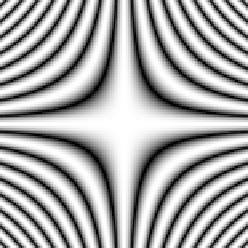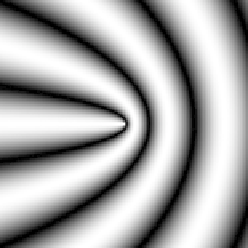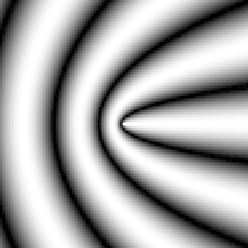Image Processing Reference
In-Depth Information
Fig. 11.2. The HFPs used in Examples 11.3 (
top
) and 11.4 (
bottom
), respectively
the basis pair of this transformation. The local orthogonality can be seen by super-
imposing the two figures so that the origins coincide. The linear combinations of the
basispair,
aξ
+
bη
,generatethefamilyoflogarithmic spirals.Somemembersofthis
familyaredisplayedinFig.11.3.Wenotethatthesignof
a
b
determinesthechirality
of the spirals, i.e., whether they are twisted to the left or to the right. By measuring
the direction angle of the vector (
a, b
), it will be possible to tell apart a left-handed
pattern from a right-handed pattern, as well as whether a pattern is circular or star
shaped, without actually knowing the gray levels of the pattern (
g
) in advance.
·
Example 11.3. We use the analytic function
z
2
to obtain the HFP
ξ, η
w
(
z
)=
z
2
=
ξ
(
x, y
)+
iη
(
x, y
)=
x
2
y
2
+
i
2
xy
−
(11.9)
which is illustrated in Fig. 11.2 (top). The generated pattern family,
aξ
+
bη
corre-
sponds to rotated versions of a basispattern. The asymptotes of the generated hyper-
bolic patterns are orthogonal and the direction of the cross is given by the direction
of(
a, b
), which, as will be discussed further below, can be used to detect “crosslike”
junctions.
Example 11.4. The analytic function
√
z
:






